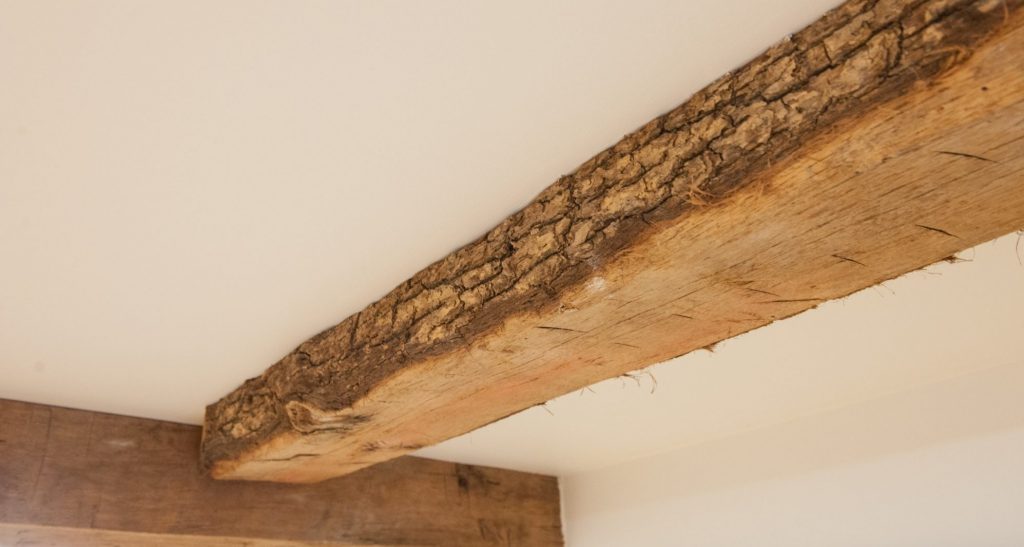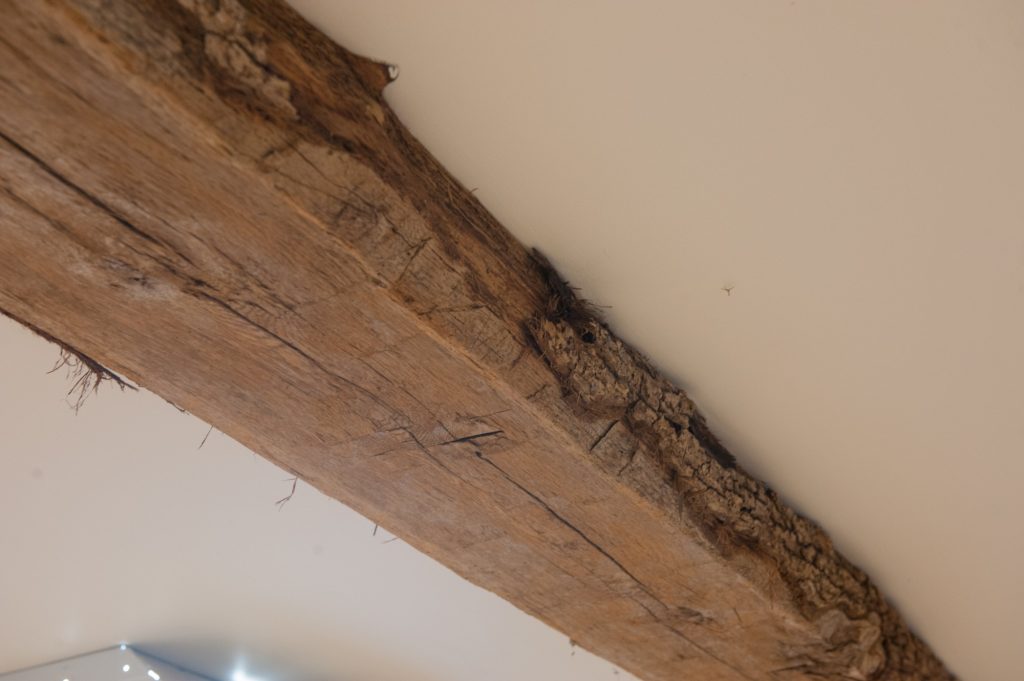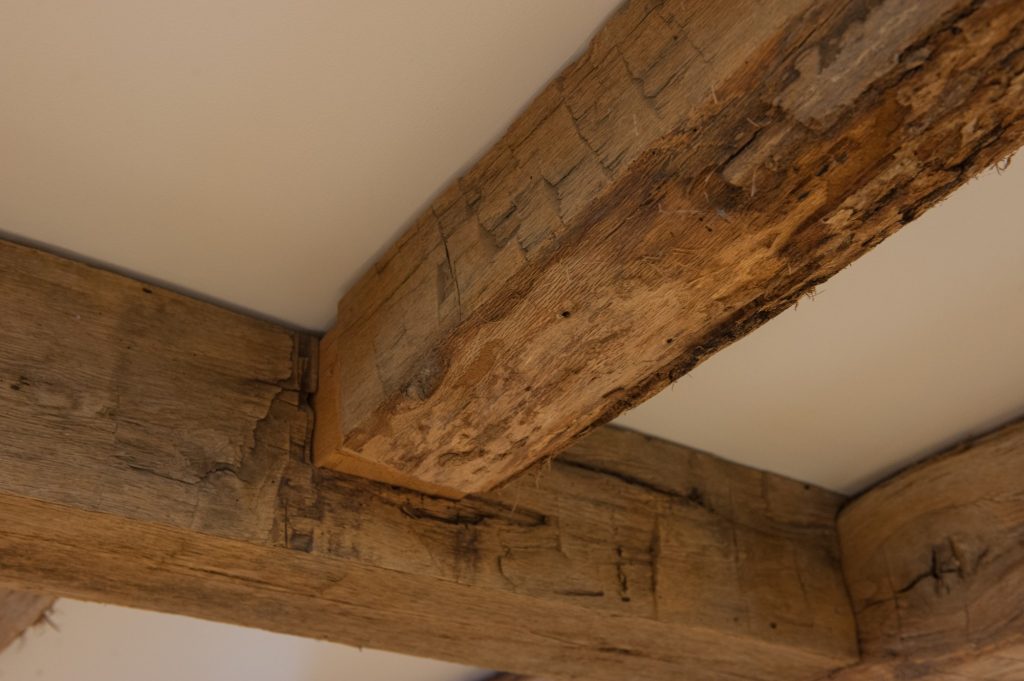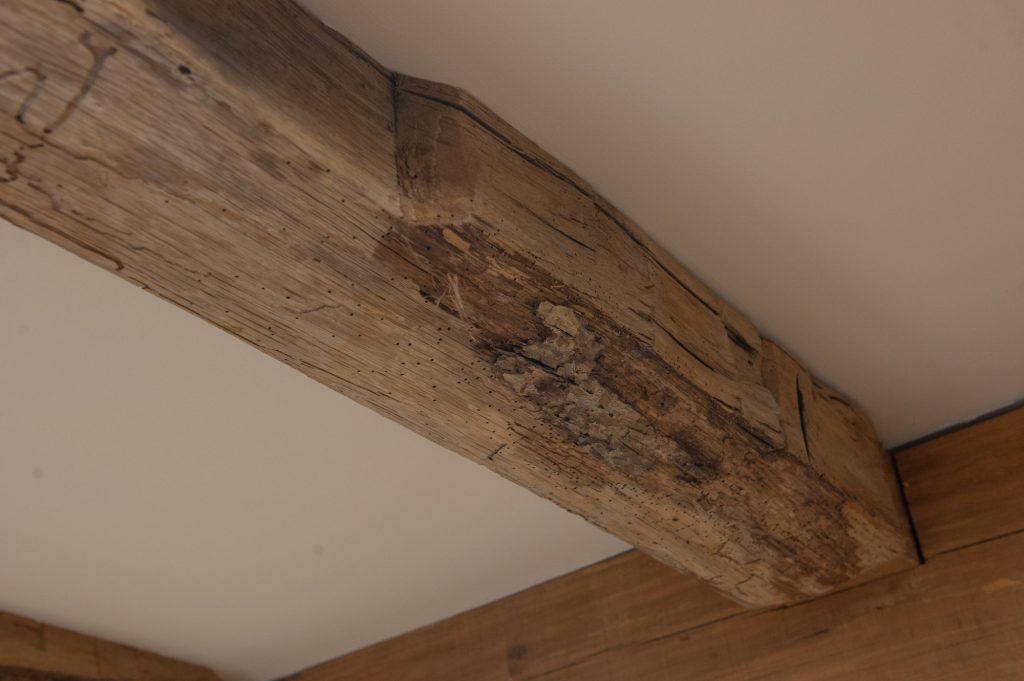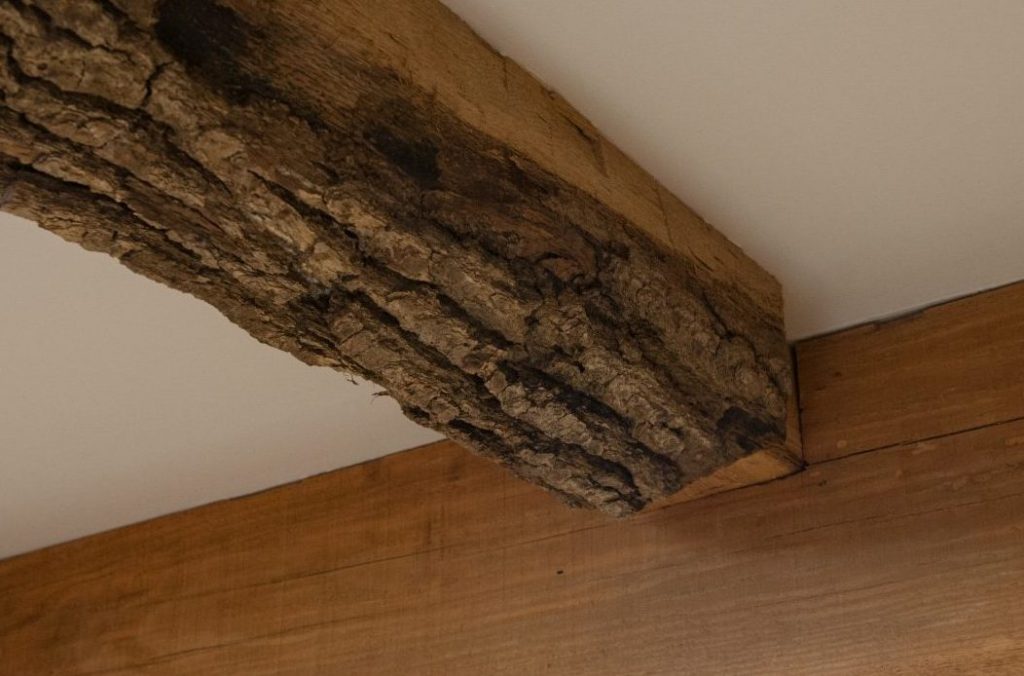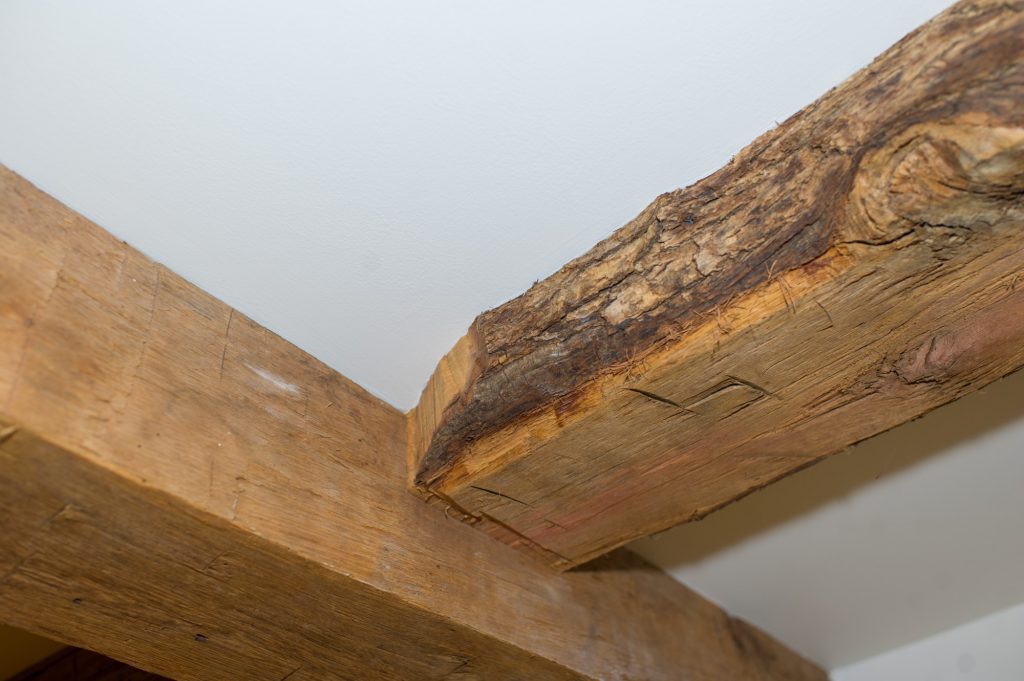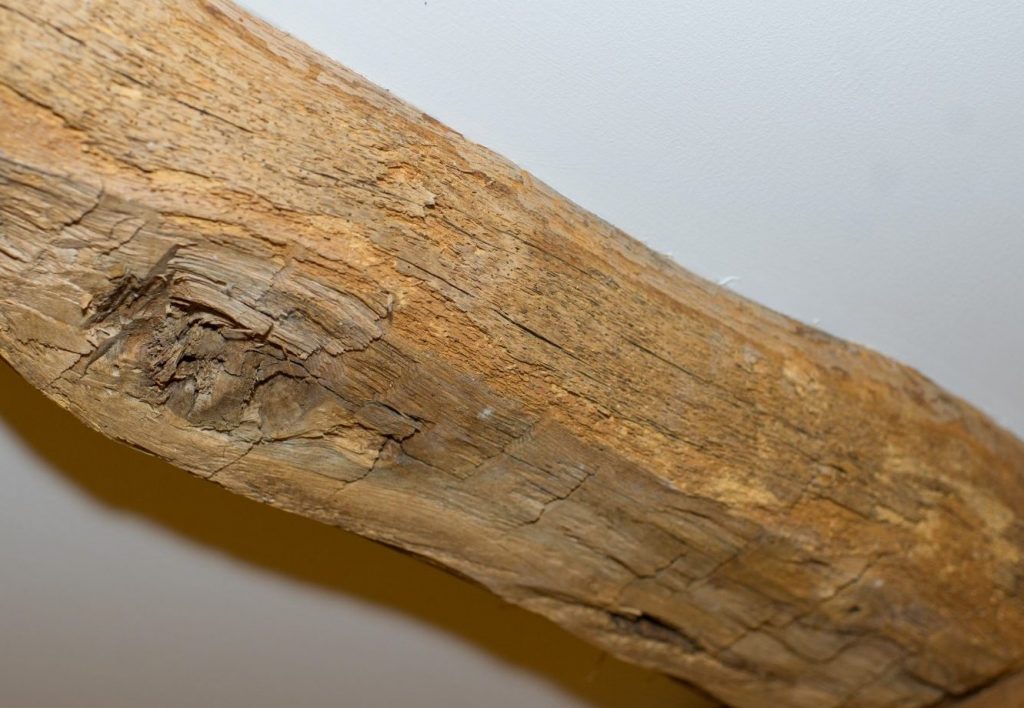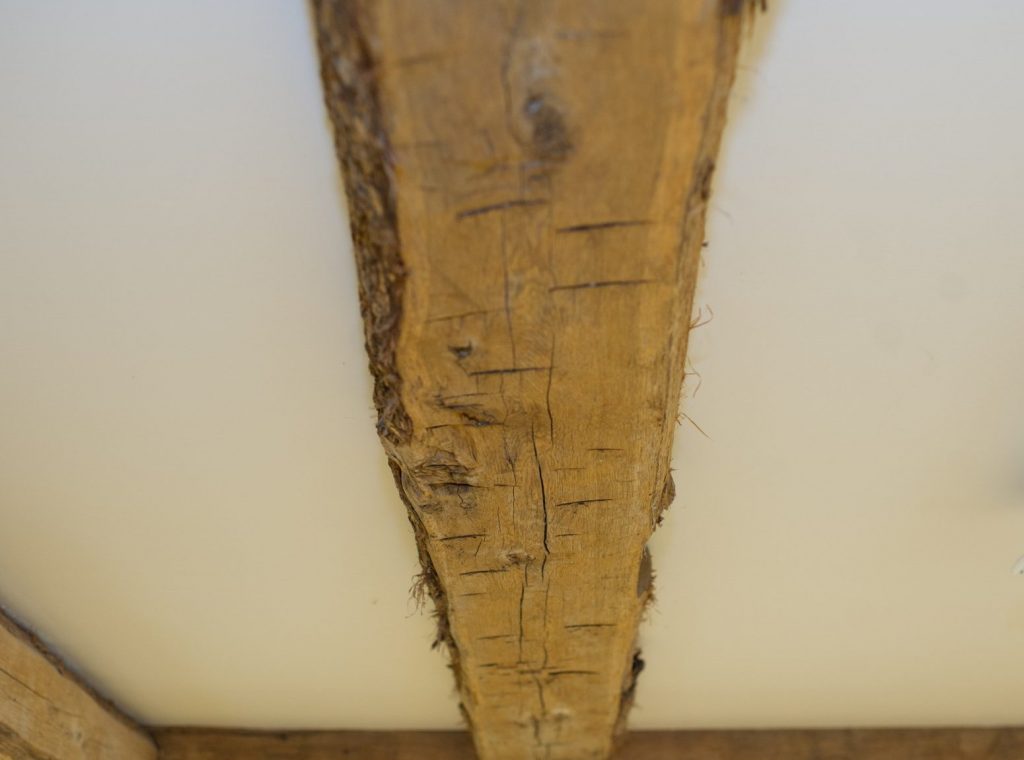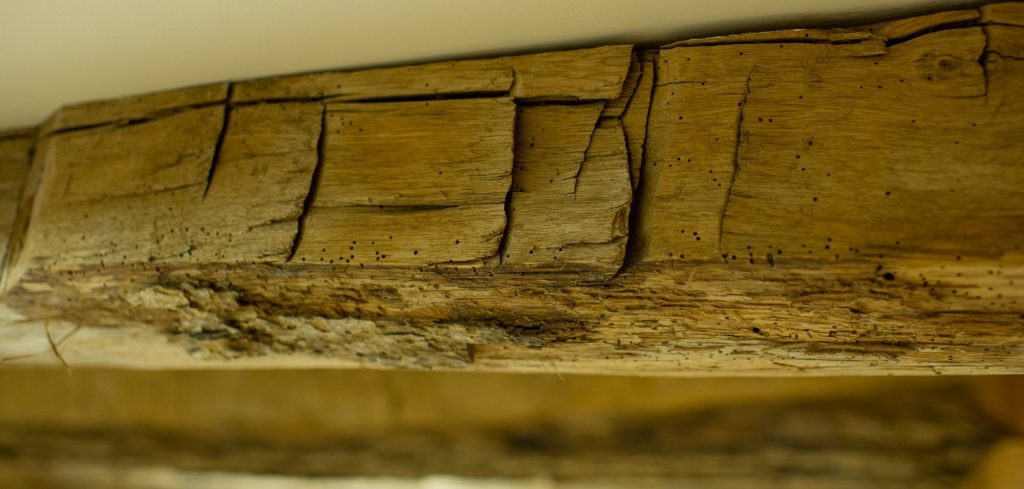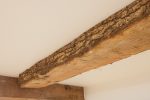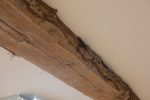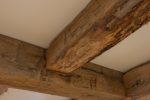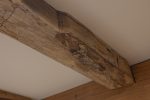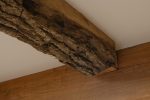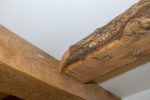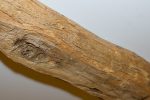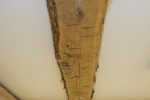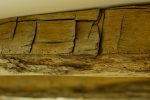Reclaimed Hand Hewn 2 Sided Beams
Before the widespread use of sawmills, hewn 2 sided(HH2S) beams were hewn(sized) with a broad axe on two opposing faces of a log to produce a log of consistent thickness–usually about 7” from hewn face to hewn face. The remaining “live edges,” also known as “bark edges” were sometimes cleaned of bark, but otherwise unworked. Hand hewn 2 sided beams were used in two distinct functions as early building techniques advanced . Originally, log cabins–both houses and barns–were built of “stacked logs” on the exterior and some interior weight bearing walls. The logs were stacked in a manner that the hewn faces were the vertical faces, allowing consistent thickness of the walls. The joinery of the corners of old log buildings are deceptively “nuanced” to provide a strong joint which remained tight, plumb, and dry. The skill and talent of the men and women who built these cabins is evidenced by the thousands of these buildings still standing, many hidden under layers of wood, asphalt, asbestos and aluminum siding. As techniques advanced, and demand for larger, open span buildings increased, “post and beam,” “mortice and tenon” joinery allowed the use of large, long timbers to accomplish this end. While most post and beam framing members were hand hewn 4 sided(squared or rectangle)(HH4S), most often the heavy duty floor joists were HH2S. As joists, the HH2S beams were laid flat to give a flat surface to attach the floor boards. While some “new” post and beam barns were built with freshly harvested logs–some 40 foot and longer–many floor joists are the HH2S logs used to build the original barn walls on the site.
Hand-hewn on two sides only and featuring natural tree trunk elements on opposing sides, these reclaimed beams offer an authentic glimpse of true pioneer living.
Vintage Lumber beams are usually sold power washed, metal detected as needed, sawn one or more faces as required, and BoraCare treated for insects and mold. Please contact to discuss your specific needs.
